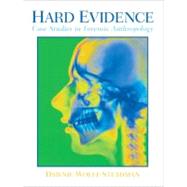
I. THE MULTIDISCIPLINARY AND LEGAL NATURE OF FORENSIC ANTHROPOLOGY CASEWORK IN THE UNITED STATES, DAWNIE WOLFE STEADMAN.
2. The Herring Case—An Outlier, Karen Ramey Burns.II. SEARCH AND RECOVERY, DAWNIE WOLFE STEADMAN.
7. Case Study: Love Lost and Gone Forever, David M. Glassman.III. INTERPRETATION OF TRAUMA AND TAPHONOMY, DAWNIE WOLFE STEADMAN.
10. Look Until You See: Identification of Trauma in Skeletal Material, O.C. Smith, Elayne J. Pope, and Steven A. Symes.IV. ANALYTICAL TECHNIQUES IN FORENSIC ANTHROPOLOGY, DAWNIE WOLFE STEADMAN.
15. Mitochondrial DNA: Solving the Mystery of Anna Anderson, Terry Melton.V. APPLICATIONS OF FORENSIC ANTHROPOLOGY, DAWNIE WOLFE STEADMAN.
19. Corpi Aquaticus: The Hardin Cemetery Flood of 1993, Paul S. Sledzik and Allison Webb WilcoxThe New copy of this book will include any supplemental materials advertised. Please check the title of the book to determine if it should include any access cards, study guides, lab manuals, CDs, etc.
The Used, Rental and eBook copies of this book are not guaranteed to include any supplemental materials. Typically, only the book itself is included. This is true even if the title states it includes any access cards, study guides, lab manuals, CDs, etc.